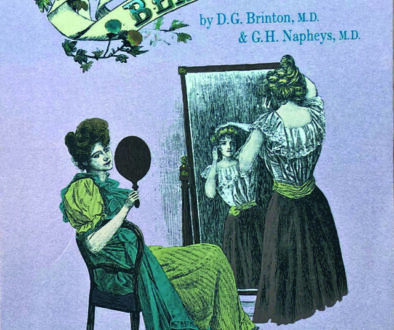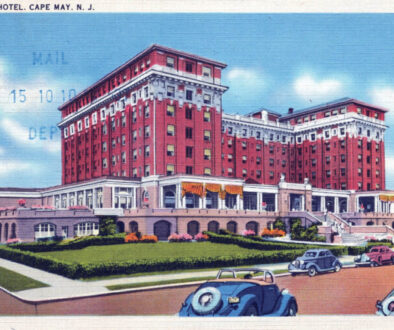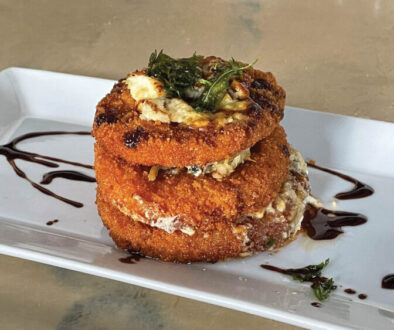Lancaster City, Pennsylvania

Lancaster County, Pennsylvania, is renowned for its Amish and Mennonite populations, horse-drawn buggies, hex signs, and towns with funny names like Blue Ball, Bird in Hand, and Intercourse.
Lancaster City is a different story: a little edgy, very artsy, quite contemporary, yet vividly historic. For culture and entertainment, this place has it all: dozens of restaurants, rows of shops and galleries, wonderfully walkable streets, exciting public art, and on every street, gorgeous, wonderfully maintained Victorian architecture.
I planned to start my road trip at the famous Lancaster Central Market, which, as the name suggests, is smack-dab in the middle of it all. But along the way, I was repeatedly drawn to other things. On Gallery Row, a half-dozen artists stood at their easels, painting in the open air. Near Penn Square, a crowd watched a terrific young band, complete with kick-ass brass, playing wonderfully percussive pop. Nearby, a street magician performed feats of legerdemain for goggle-eyed kids. Then a talented kid sat down at a public piano—yep, a colorfully painted sidewalk piano—and played classical music for no one at all. (It’s part of the “Keys for the City” program, which installed 14 pianos in public places). Lancaster is just that kind of city—spontaneous and bursting with life and music.
Finally, I reached the market, a massive gabled brick building that houses some 60 vendors, mostly local farmers peddling fresh produce, baked goods, meats and cheeses, fresh flowers, and handicrafts. Its charter was issued in 1742 by none other than King George II, who ensured that the market would operate “forever in the lot of ground already agreed upon for that purpose.” Bring your shopping cart.
If Lancaster City is your Jeopardy! category, you know that:
- In 1777, it was the capital of the United States—very briefly. The Continental Congress, fleeing British invaders in Philadelphia, convened here for a single day before moving further north to York.
- Lancaster is also known as the Red Rose City and takes that floral symbol from the royal crest of Lancaster, England.
- F.W. Woolworth opened his first 5-and-10-cent store here in 1879. Milton Hershey’s chocolate business also was established here.
- Lancaster was a munitions hub during the Revolutionary War, and a stop on the Underground Railroad during the Civil War.
- The Conestoga wagon and the Pennsylvania long rifle both originated here.
- Lancaster was a center of early American printing. In 1751, Ben Franklin helped establish a press here, and there are nods to the industry all around town, and the city still hosts an annual Printer’s Fair.

You can take a historic walking tour through town, or just hoof it on your own. Most attractions are within an easy stroll: the market, the Lancaster Museum of Art, the towering Soldiers and Sailors Monument, and the Fulton Theater, a historic performance former opera house that’s hosted the likes of “Yankee Doodle Dandy” composer George M. Cohan, Sarah Bernhardt, Al Jolson, and the Barrymores. It’s named for Robert Fulton, inventor of the steamboat, who was born in nearby Little Britain Township.
At lunchtime, I stopped at a beautiful bistro called C’est La Vie, which serves French and “modern European” cuisine. I ordered the lobster pizza, made with citrus béchamel, basil pesto, bacio cheese and arugula, scrumptious with a salad and a bowl of sweet corn and leek soup. I tried a signature cocktail called the Cherry Street (hibiscus vodka, cherry green tea, raspberry liqueur, and lemon juice in a Collins glass—perfect). C’est la Vie offers lots of outdoor seating, and the people-watching is unbeatable.
Make time to wander outside the city too, in Pennsylvania Dutch or “Distelfink Country,” settled by German immigrants in the 17th century. Some sights to see: the magnificent Ephrata Cloister, a religious settlement that served as a hospital for soldiers during the Revolutionary War; the Cornwall Iron Furnace, which cast cannons for the same war; the Julius Sturgis Pretzel Bakery in Lititz (circa 1861), where you can learn pretzel-twisting; and Strasburg Railroad, America’s oldest short-line railroad, which offers tours of the glorious countryside.



You may also want to visit Wheatland, the mansion home of the country’s 15th president, James Buchanan. According to most accounts, Buchanan was an ineffective-to-downright-lousy president who could not stem the unrest that led to the Civil War; in April 1861, a month after he left office, the battle of Fort Sumter put the United States at war with itself.
Summing it up, I would agree with Forbes magazine, which in 2018 listed Lancaster City among the “10 Coolest U.S. Cities,” and called it “a newly hip Victorian city” and “a cultural hotbed.” City and county together, Lancaster, Pennsylvania made for a richly satisfying road trip. ■



